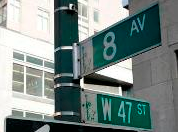
It’s a policy that dates back to World War I: rent regulation. A housing law that currently applies to 62.6% of the
rental units in New York City, rent regulation’s effect on the city’s inhabitants cannot be underestimated. However, rent regulation is far from universally accepted throughout NYC. Recent controversy arose when landlords from the
Upper West Side filed a federal lawsuit advocating for the removal of rent regulation due to its alleged unconstitutionality. For many landlords of rent-regulated apartments, it seems unjust that residents could afford to endlessly renew their leases.The importance of rent increases and alterations can furthermore be seen in the recent decision by the Rent Guidelines Board to allow landlords to make a 2% rent increase on 1-year leases and a 4% increase on 2-year leases.
Rent regulation as a whole comes in two forms: rent stabilization and rent control. Rent stabilization, applying to almost 1 million units in NYC, protects its residents from any sharp increases in rent and gives them the ability to continuously renew their leases so long as the rent does not exceed $2,500. Rent control, which only comprises 38,000 units in New York City, applies to a significantly smaller population of residents and is only available to resident families that have lived in their apartment continuously since 1971. Rent control similarly allows residents to pay a fixed rent with the ability to renew leases, supporting millions of residents that depend on rent regulation.
Those opposed to the idea of overturning rent regulation argue that, aside from the potential eviction of almost a million Manhattan rental residents, the sudden disappearance of regulated units could
easily lower average rent in the city and drastically devalue several properties. Without a controlled supply of regulated apartments, rents may well fall and massive turnover rates would occur for residents.As a whole, statistics on the existence and prevalence of rent-regulated buildings in New York represent a variety of demographic information across the city, including which areas are most dependent on rent regulation and which would be most affected.
Of significant note are the 383,000 rent regulated units in Manhattan, which represent 17.7% of all rent regulated units in NYC. Since the majority of Manhattan’s rental apartments are rent-regulated apartments, the disappearance of this policy would likely cause a leveling off and decrease in market value of properties throughout Manhattan. Though rent control and rent stabilization have certainly run into recent roadblocks, the effects of these policies in Manhattan cannot be overstated.
 It’s a policy that dates back to World War I: rent regulation. A housing law that currently applies to 62.6% of the rental units in New York City, rent regulation’s effect on the city’s inhabitants cannot be underestimated. However, rent regulation is far from universally accepted throughout NYC. Recent controversy arose when landlords from the Upper West Side filed a federal lawsuit advocating for the removal of rent regulation due to its alleged unconstitutionality. For many landlords of rent-regulated apartments, it seems unjust that residents could afford to endlessly renew their leases.The importance of rent increases and alterations can furthermore be seen in the recent decision by the Rent Guidelines Board to allow landlords to make a 2% rent increase on 1-year leases and a 4% increase on 2-year leases.
It’s a policy that dates back to World War I: rent regulation. A housing law that currently applies to 62.6% of the rental units in New York City, rent regulation’s effect on the city’s inhabitants cannot be underestimated. However, rent regulation is far from universally accepted throughout NYC. Recent controversy arose when landlords from the Upper West Side filed a federal lawsuit advocating for the removal of rent regulation due to its alleged unconstitutionality. For many landlords of rent-regulated apartments, it seems unjust that residents could afford to endlessly renew their leases.The importance of rent increases and alterations can furthermore be seen in the recent decision by the Rent Guidelines Board to allow landlords to make a 2% rent increase on 1-year leases and a 4% increase on 2-year leases.




